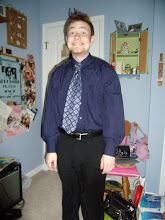In everyday discourse, we make reference to an abundance of objects. In fact, the previous sentence implied at least three with the words 'discourse', 'we', and 'abundance'. Many of these are things we can directly sense, like my cat Gizmo. Some objects, are of an abstract nature. The number three is not an object that one would expect to bump into on his way to work.
This paper will focus on the first category, so-called material objects. A material object is one that is located in the material world. It has extension: length, width, height, and therefore volume. (Note here that, technically, a material object will be defined as an object that has a part that has extension. Recall that all objects have themselves as a part.)
Where M is the set of all material objects, Pxy is the relation of x being a part of y and Ex is the property of extension:
(1) [∀x: x ∈ M] ∃y(Pyx ^ Ey)
The principle target of inquiry will be an answer to van Inwagen's Special Composition Question. That is, when is it the case that two or more objects compose an additional object?
SCQ: ∃y the xs compose y?
All of this probably seems quite obscure to the reader. Let me try to distill the jargon. Consider the food I've laid out on the kitchen counter. There are two pieces of bread, some ham, and a slice of cheese. The Special Composition Question amounts to this: in what circumstances do the bread, the ham, and the cheese compose some further object?
Subscribe to:
Post Comments (Atom)

No comments:
Post a Comment